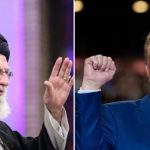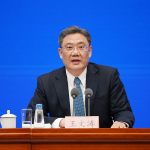A planned summit between U.S. President Donald Trump and Russian President Vladimir Putin has been put on hold after Moscow rejected calls for an immediate ceasefire in Ukraine.
A senior White House official said, “there are no plans for President Trump to meet with President Putin in the immediate future,”
following a phone call between U.S. Secretary of State Marco Rubio and Russian Foreign Minister Sergei Lavrov. Although the discussion was described as “productive,” both sides decided against moving forward with a face-to-face meeting.
President Trump had announced last week that he and Putin would soon meet in Hungary in an effort to broker peace in Ukraine. However, Putin has remained firm in his demands and has refused to make significant concessions. Russia has insisted that Ukraine must agree to give up more territory before a ceasefire can be considered.
According to U.S. officials familiar with the situation, Russia restated its long-standing conditions in a private diplomatic message known as a “non paper,” sent to Washington last weekend. One official explained that the message reaffirmed Moscow’s demand for “full control of the long-contested eastern Donbas region,” thereby dismissing Trump’s proposal for a ceasefire based on freezing the current battle lines.
At present, Russian forces occupy the entire Luhansk province and approximately 75% of neighbouring Donetsk—together forming the Donbas region.
On Tuesday, European leaders urged Washington to stand firm in pushing for a ceasefire that would begin with the current frontlines, and serve as the foundation for further negotiations.
NATO confirmed that Secretary General Mark Rutte traveled to Washington on Tuesday to meet with President Trump. According to two sources familiar with the visit, the talks are expected to take place on Wednesday. A Western official, speaking on condition of anonymity, said Rutte intends to share the European view on the need for an immediate ceasefire and the framework for future peace talks.
President Trump, who had a recent phone call with Putin and met last week with Ukrainian President Volodymyr Zelenskyy, had hoped for another high-level meeting with the Russian leader after their August summit in Alaska ended without tangible progress.
However, a scheduled preparatory meeting between Rubio and Lavrov, planned for Thursday in Budapest, has been postponed. During their Monday call, Lavrov stated that the location and timing of the summit were less important than “the substance of implementing the understandings reached in Alaska.”
Kremlin spokesman Dmitry Peskov said that no date had been finalised and emphasised that “serious preparation” would be needed.
“Listen, we have an understanding of the presidents, but we cannot postpone what has not been finalised,” Peskov said.
“Neither President Trump nor President Putin gave exact dates.”
When asked whether a summit date had even been discussed,
Peskov added: “No, there is no understanding.”
Although no formal cancellation has been announced, the delay of the Budapest meeting signals uncertainty. Hungary’s Foreign Minister Peter Szijjarto, who was in Washington on Tuesday, wrote on Facebook:
“We have some serious days ahead.”
Two senior European diplomats said the postponed meeting between Rubio and Lavrov likely indicates that the U.S. will not pursue the summit unless Moscow shows more flexibility. One diplomat commented,
“I guess the Russians wanted too much and it became evident for the Americans that there will be no deal for Trump in Budapest.”
The second diplomat noted,
“The Russians haven’t at all changed their position, and are not agreeing to ‘stop where they are’.
And I assume Lavrov gave the same spiel, and Rubio was like: ‘See you later’.”
Some European governments are concerned that President Trump could meet with Putin without securing real concessions from Moscow. On Tuesday, the leaders of several major European nations, including the UK, France, Germany, and the EU, issued a joint statement saying they
“strongly support President Trump’s position that the fighting should stop immediately, and that the current line of contact should be the starting point of negotiations.”
Although Trump’s public stance on Ukraine has shifted at times, following his meeting with Zelenskyy last Friday, he clearly backed the idea that a ceasefire should begin “with forces at their present positions.”
Reports from officials familiar with the meeting say the conversation between Trump and Zelenskyy was tense, with the president using strong language and urging Ukraine to consider some of Russia’s demands. However, Zelenskyy described the meeting as a success, pointing to Trump’s public endorsement of Kyiv’s position on a ceasefire.
Zelenskyy is scheduled to join European leaders later this week, first at a European Union summit and then at a gathering of the “coalition of the willing,” where discussions will focus on creating an international security force to oversee any future post-war settlement. Russia has firmly opposed such a force.
The choice of Budapest as a potential summit location has raised concerns among European leaders. Hungarian Prime Minister Viktor Orban remains one of the few EU leaders maintaining close ties with Moscow, making the location controversial.
There are also logistical complications. Should Putin travel to Hungary, he would need to pass through EU airspace. On Tuesday, Poland stated it could intercept and arrest him under an international warrant if he flew over its territory. Bulgaria, however, said it would permit Putin’s aircraft to use its airspace for the summit.



